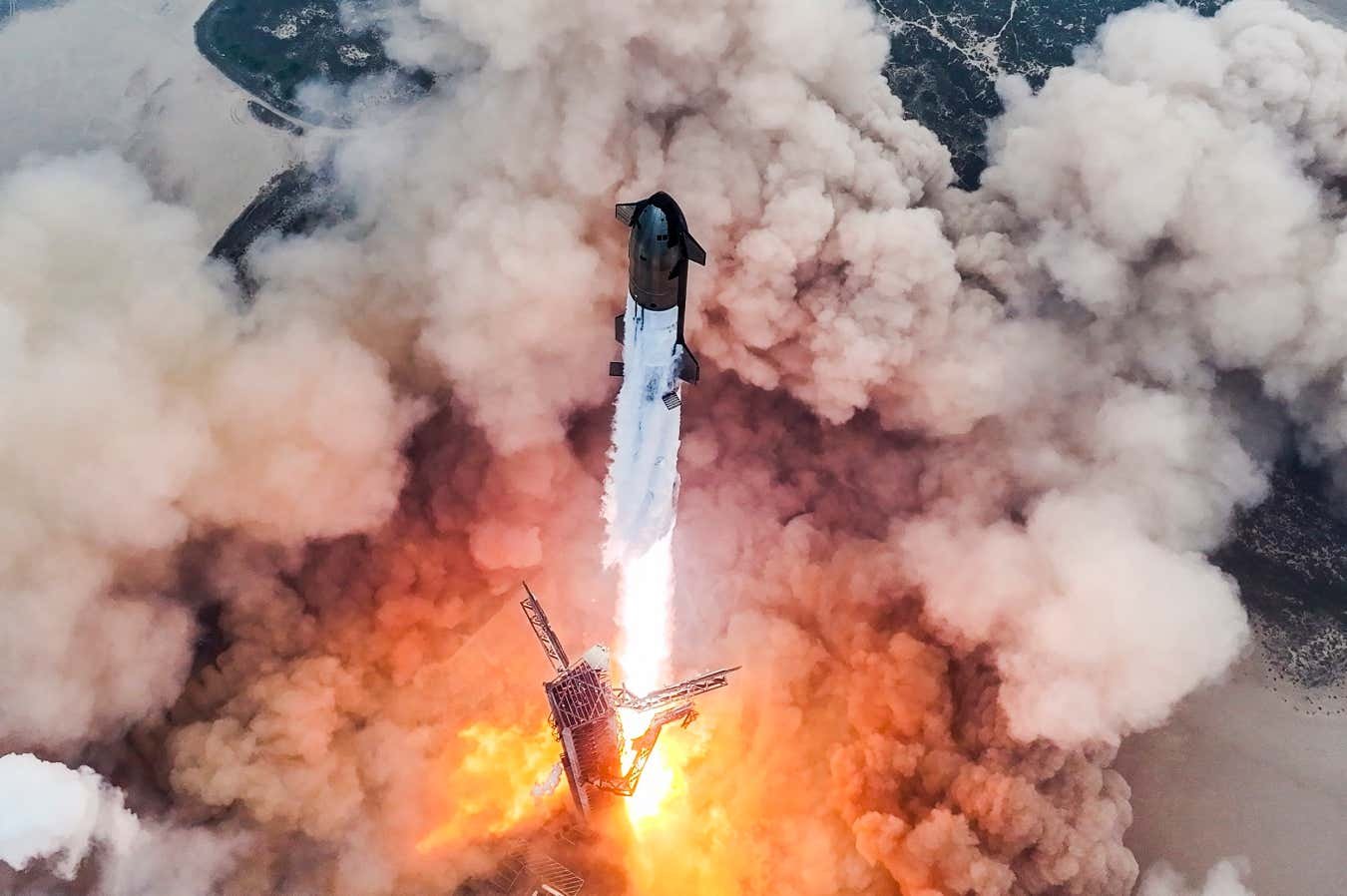
SpaceX says on its website that it aims to conduct the sixth test flight of Starship as early as 18 November
SpaceX
SpaceX is making preparations for the sixth test flight of the world’s most powerful rocket, Starship. The company has been taking a “fail fast, learn fast” approach to research and development more akin to the world of Silicon Valley than the aerospace industry, and the pace of launches only appears to be speeding up.
When is the next flight?
SpaceX says on its website that it aims to conduct the sixth test flight of Starship as early as 18 November. This claim is backed up by the Federal Aviation Administration having issued a NOTAM (Notice to Airmen) warning of a rocket launch in the area of SpaceX’s launch pads in Boca Chica, Texas. The 30-minute launch window will open at 4pm local time (10pm GMT).
It took SpaceX 18 months to carry out the first five Starship test flights, with the fifth taking place in the middle of October. If the company carries out the sixth next week, it will mean a gap of just over one month since the last flight – its fastest turnaround yet.
What will SpaceX attempt in flight 6?
In many ways, flight 6 will be a repeat of flight 5, but with a few key differences.
The booster stage will again attempt a “chopstick” landing, in which the craft is grabbed and secured as it returns to the launchpad, allowing it to be lowered to the ground. This approach is designed to eventually allow the booster to be re-used multiple times and massively reduce the cost of putting payloads into orbit.

Starship during a high-altitude test flight
SpaceX
The upper stage will reach space, carry out a partial orbit and then re-enter Earth’s atmosphere for a splash landing in the Indian Ocean. But this time, the upper stage will attempt to reignite one of its Raptor engines while in space in order to collect valuable operational data. It will also test new heat shield designs during re-entry.
Another difference is that the launch will take place later in the day so that the landing of the upper stage in the Indian Ocean can be filmed in daylight, ensuring greater detail. Previous missions have seen night landings and therefore footage – while cinematic and dramatic – hasn’t given engineers as much insight as video of a daytime landing will.
What happened during previous Starship launches?
Test flight 1 on 20 April 2023 saw three of the booster stage’s 33 engines fail to ignite. The rocket later span out of control and self-destructed.
The second test flight on 18 November 2023 got further, gaining enough altitude that the booster and upper stages separated as planned. The booster stage ultimately exploded before reaching ground level and the upper stage self-destructed, although not before successfully reaching space.
Test flight 3 on 14 March 2024 was at least a partial success, as the upper stage reached space once more, but it failed to return to ground level intact.
The next flight, on 6 June, saw the upper stage reach an altitude of more than 200 kilometres and travel at over 27,000 kilometres per hour. Both the booster and the upper stage completed soft splashdowns in the ocean.
Test flight 5 was the most ambitious to date, with Starship’s Super Heavy booster dropping back to the launch pad and being safely caught by SpaceX’s launch tower, called Mechazilla, in a pair of “chopsticks”. It is equipped with a pair of “chopsticks” to grab the craft at a specific point and secure it, allowing it to be lowered to the ground.
Topics:













Leave a Reply